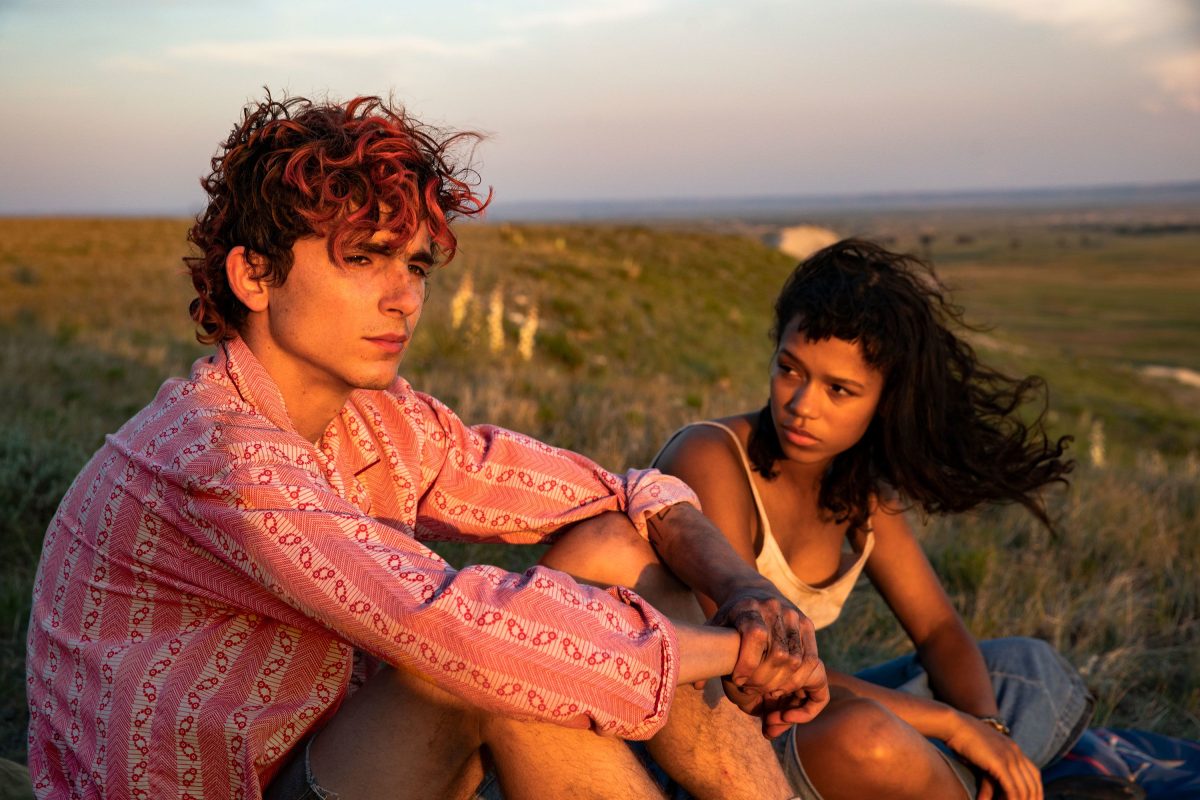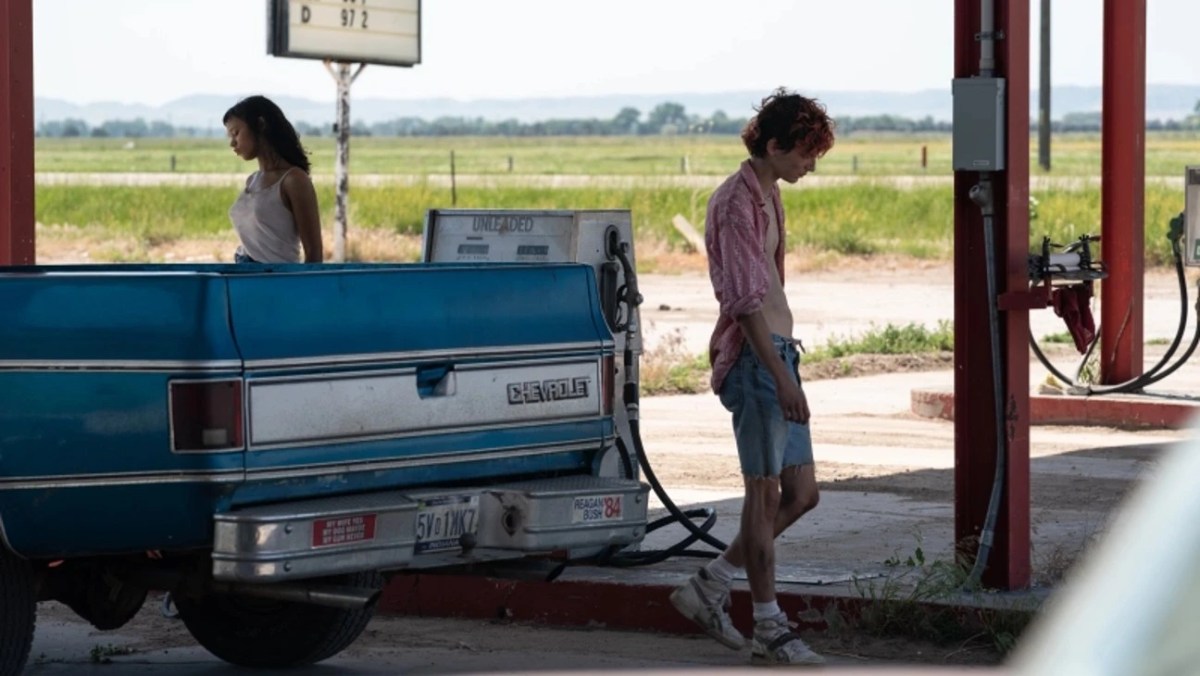‘Bones and All’: Changes From the Book Made the Movie Even Better

Timothée Chalamet and Taylor Russell have been taking over the world in Luca Guadagnino’s latest film. Weaving a bit of horror into a romance that takes us into a car journey across the United States, Bones & All is a masterpiece and something that will stay with you long after you leave the theater. And it lingers on you longer than the novel of the same name did, thanks to taking some liberties.
**Spoilers for both the film and the books Bones & All lie ahead.**
Bones & All has continued to shock me in the sense that the movie is, in my opinion, better than the novel, which is a hard feat to accomplish because the book is genuinely a good read. The screenplay, by David Kajganich who worked on it with Luca Guadagnino, just explores this world in a different way from the book. Written by Camille DeAngelis, Bones & All tells the story of Maren, an “eater.” It’s like if cannibalism were more like vampirism and you couldn’t control it, and if it were more of a superpower than just something that people did.
Hence the name—because eaters eat people bones and all. The movie has a bit of a different thinking behind it, and that’s just one of the few elements that differ from the book to the movie, so let’s break down some of the major things that were changed for the Luca Guadagnino film Bones & All.
Maren’s parents
In the novel, protagonist Maren’s mother is the one who raises her, and we get to spend a bit more time with them as we learn about Maren’s history as an eater, mixed with why Maren gets on a bus to try to find her mother again in the first place. In the movie, it is Maren’s father (played by André Holland) who is raising her before her need to feed on human flesh becomes too much, and he forces his 18-year-old daughter to go out into the world on her own.
Maren’s mother leaving her forces Maren to try to find her once more in Pennsylvania, and it is how she connects with Sully, an older, more experienced eater, and goes on her own journey to find her mother and get answers as to why she is an “eater.” All of it starts with her mother leaving, and we get to spend time with the stress that Maren had caused her. We learn about her mother losing her job and her opportunities because Maren ate her boss’ son. We see her fear and her worry, and we get that with Holland’s performance, though it’s brief in comparison to the time spent with Maren and her mother in the book.
The reality of an eater

An eater in the film Bones & All is more about the need to do eat people, but doing so isn’t as “clean” or quick as the book makes it out to be. We see Maren drawn to her friend in the beginning of the movie, and she eats her finger before the other girls at the sleepover pull Maren off of her. In the novel, that definitely wouldn’t have been the case.
It’s clearer in DeAngelis’ story that each eater has a reasoning behind their need to feed on another human. For Lee (played by Timothée Chalamet), he eats those who have been assholes to others. For book Maren, it was about getting close to a boy and having feelings for him, which is why she views herself as a monster more than anything. Lee, in her eyes, is a hero because he does it to people who have hurt others. She feeds on those who have only shown her affection.
The movie is a bit different because yes, Lee still feeds on assholes, but Maren’s desire to feed is less all consuming, and she’s not instantly ready to eat anyone who gives her a second glance. For the most part, the times we do get to see Maren feed in the movie other than that first moment, she’s led into it by Lee or Sully (Mark Rylance).
They tell her to come join them, and she does. There’s even a moment when she tells Lee that she’s hungry, and that’s when he chooses to kill a man being an asshole to a kid at a carnival so that Maren can feed on him. And in the novel, the idea of “bones and all” is sort of always the case. There are bags of the remains they don’t finish, but Maren even remarks on how fast and complete Lee is when he eats someone, while the movie makes it seem like more of a slow process and one that leaves more than just a bit of remains.
And there’s the concept of “bones and all” as Jake (Michael Stuhlbarg) explains it to Maren and Lee in the movie, when they meet him and Brad (David Gordon Green) in the woods. Jake explains it as eating someone completely whole, meaning their bones and all, and Maren calls bullshit on it, but from what I interpreted from the book, that is what Maren did in DeAngelis’ story.
Sully and Maren’s relationship
This is one of the changes in the movie that I don’t necessarily think makes sense. Sully keeps coming back to Maren in the book because he finds her right after her mother leaves, and the old woman she helped at the store dies. He comes in, eats the dead woman, and explains to Maren that he is the kind of eater who doesn’t kill. They leave on happy terms and come to the conclusion that they have to move on and leave on somewhat good terms.
When he comes and finds her with Lee at the carnival, Maren is even happy to see him and Lee continues to be suspect of him but goes with Maren anyway. It is only when Maren is alone with him after she finds her father (realizing that he is why she’s an eater) that the truth is revealed that Sully is her grandfather and failed at killing her father and so will make sure she dies.
None of this is in the movie. Instead, Sully just seems obsessed with her and then thinks she knows “too much” about him and so she has to die because she won’t come with him. It works fine but having that additional layer to Sully and Maren’s relationship makes their story flow in a way that I just think works better in the novel.
The love story

So basically the book is not really a love story. At least not in the way that the movie is. Lee and Maren don’t get to have a happy moment as a couple where they can share their love for each other while on this journey together, mainly because Maren’s eating is tied to affection and if Lee did show her any affection, she probably would have eaten him right then and there.
In the movie, Maren’s eating is more tied to her discovery and necessity rather than affection, so when she begins to fall in love with Lee and the two are the only companion the other knows. But their love in the movie is deeper than the book gets into because the movie has the freedom to explore their love without the worry of Maren and the way she eats. It makes the end of the movie that much harder to come to terms with because you know what Maren and Lee mean to each other.
A happier ending?
In the book, Maren succumbs to being the monster she thinks she is and eats Lee because it is out of her control. It is the first time they really show their feelings really for each other, and it results in Lee’s death—which is why when people were calling this movie a “love story” prior to the release, I was a bit confused. The book barely is one and is more about Maren’s own journey to understanding what she is and how she cannot change the “monster” she thinks she is.
But in the movie, Lee’s death isn’t just what has to happen because of who Maren is. It feeds into the larger story and makes it so that you feel for Maren as she begs Lee to not make her do this. When Sully comes to their home and is trying to kill Maren for knowing too much about him, you feel the desperation in both her and Lee to get to safety. And when Lee is gasping for air and you see that he’s been stabbed, that death and Maren’s cries for him to be okay all just … hit.
And in such a way that the ending of the book pales in comparison because with this one, there was no other choice. It was either let Lee die and leave his body, or he is Maren’s, bones and all, and it is honestly poetic.
—
Bones & All is in theaters now and is well worth the watch (and read)!
(featured image: MGM)
Have a tip we should know? [email protected]
